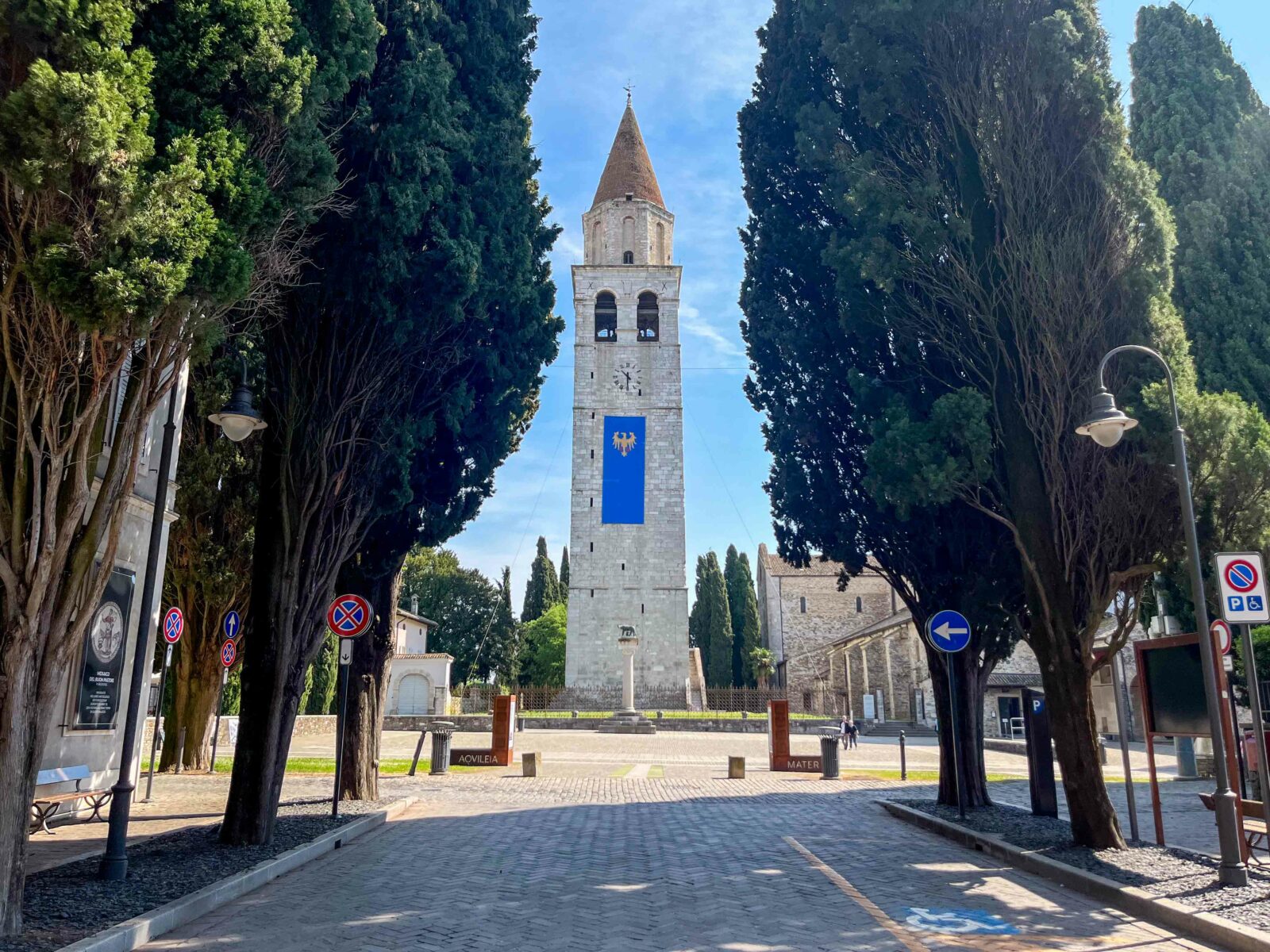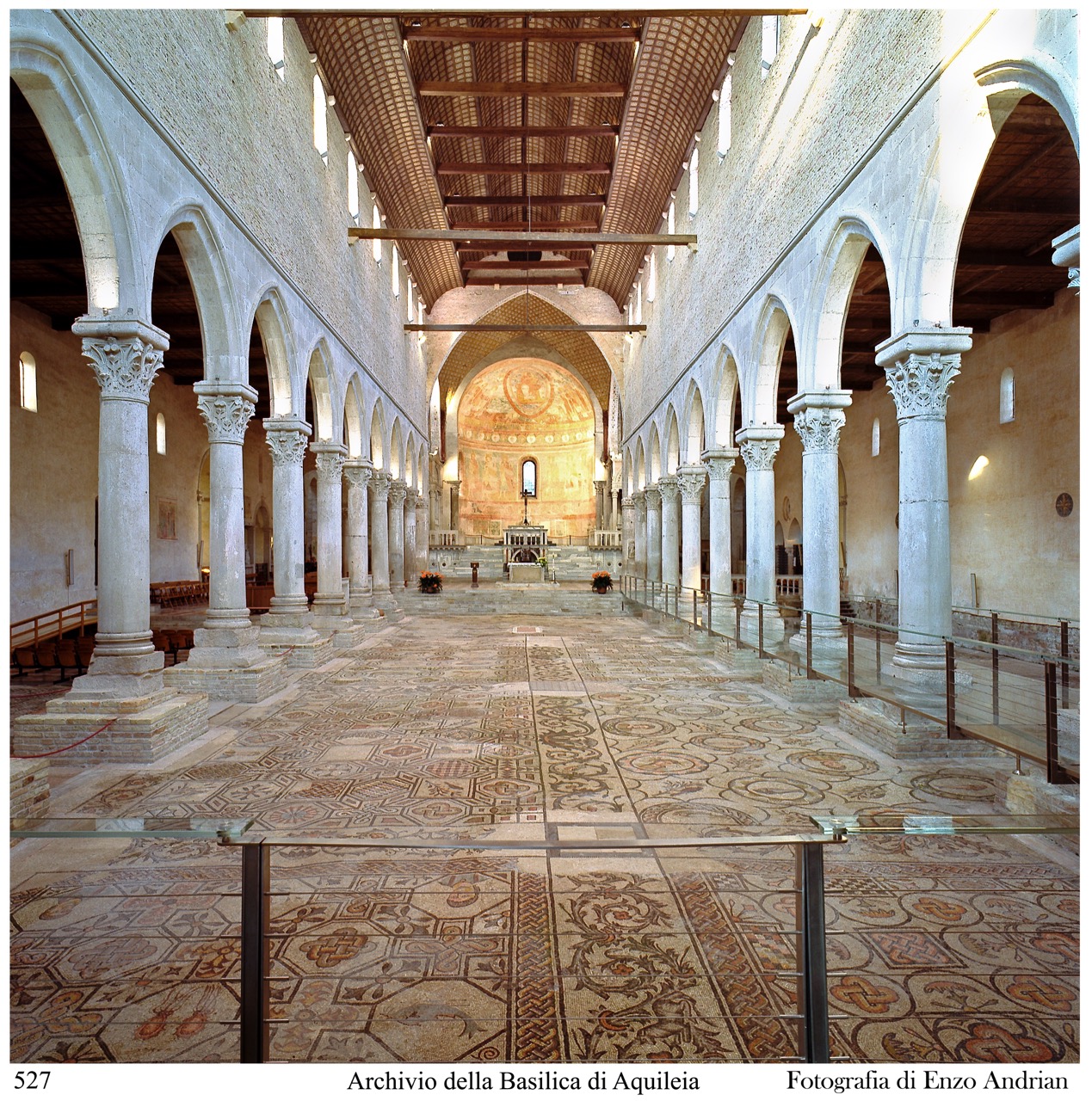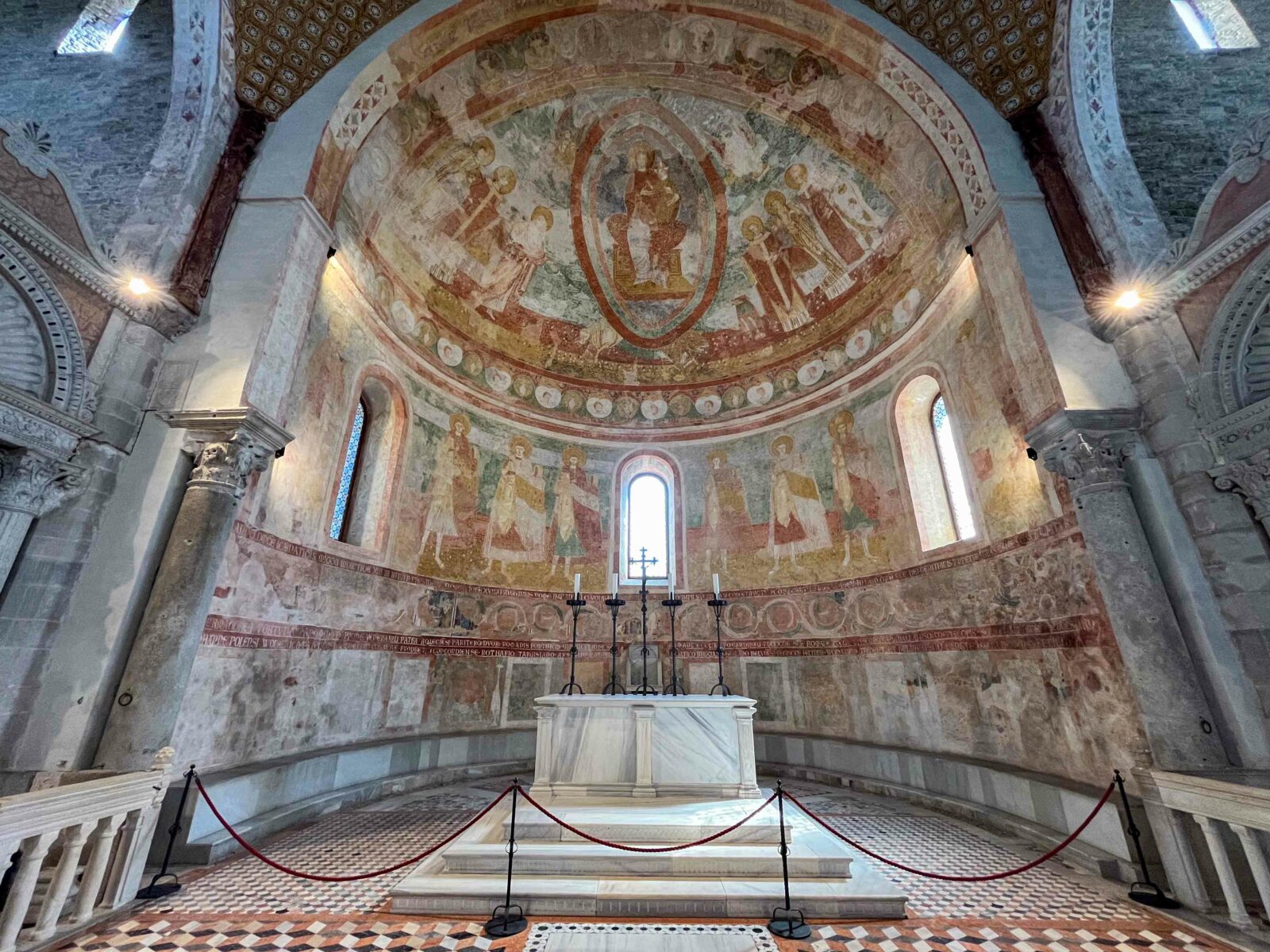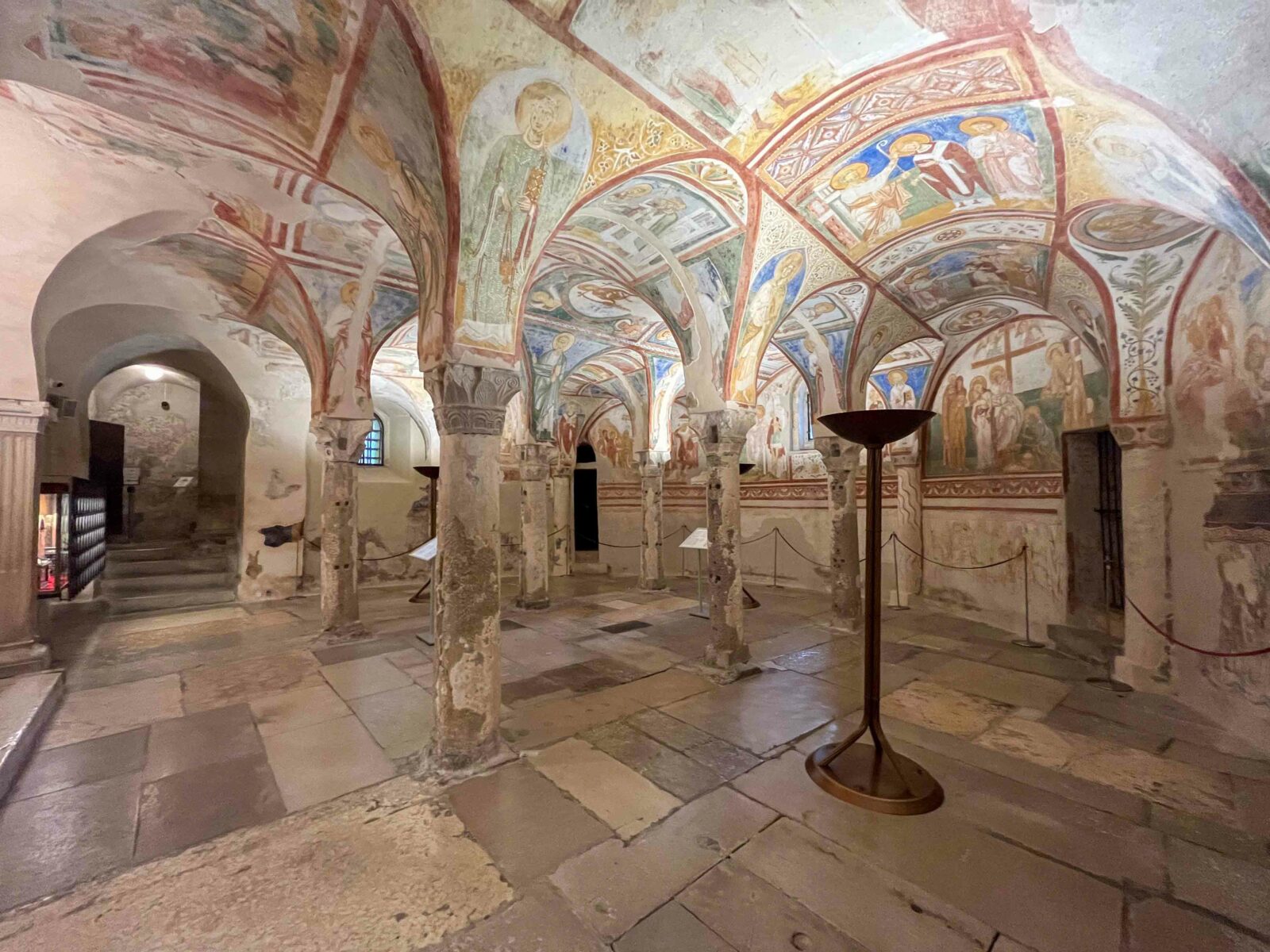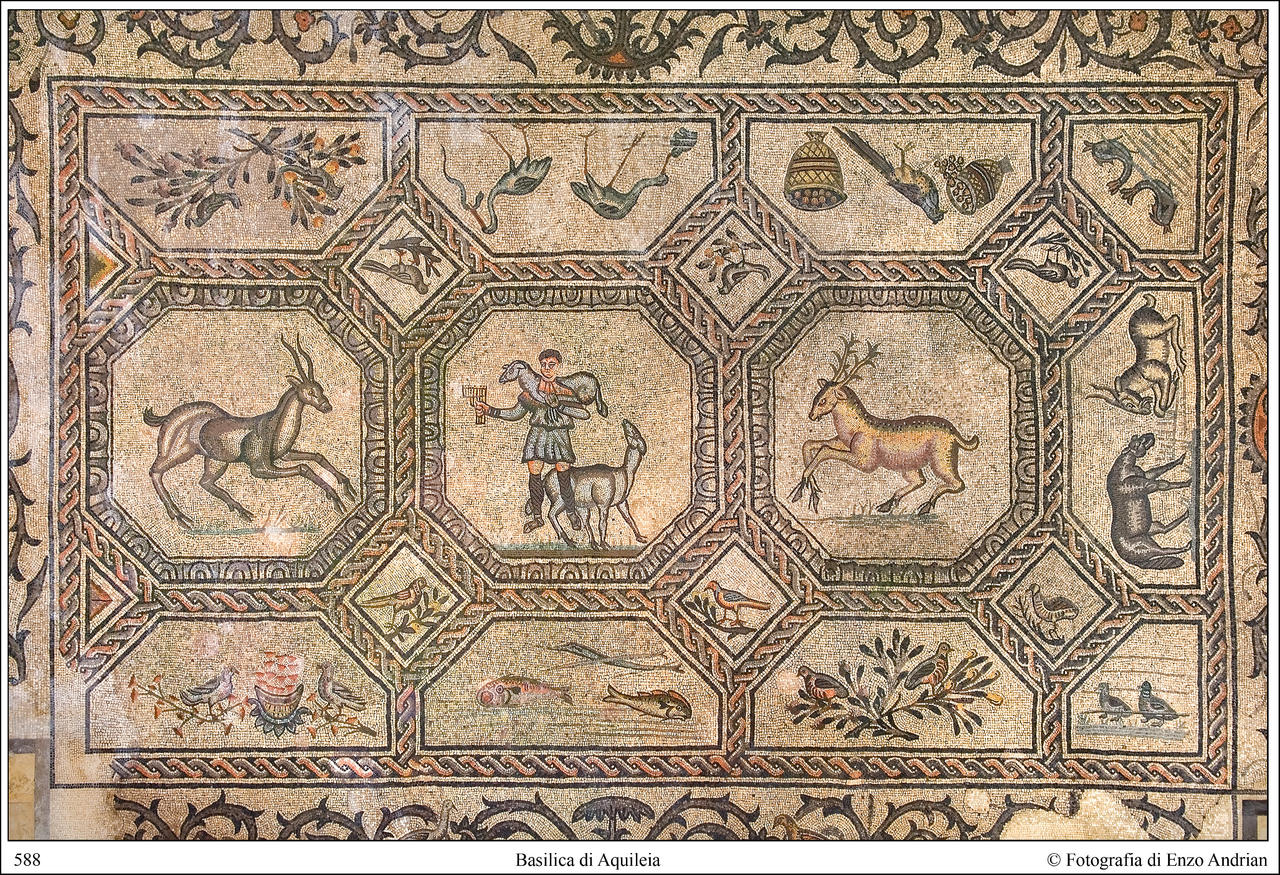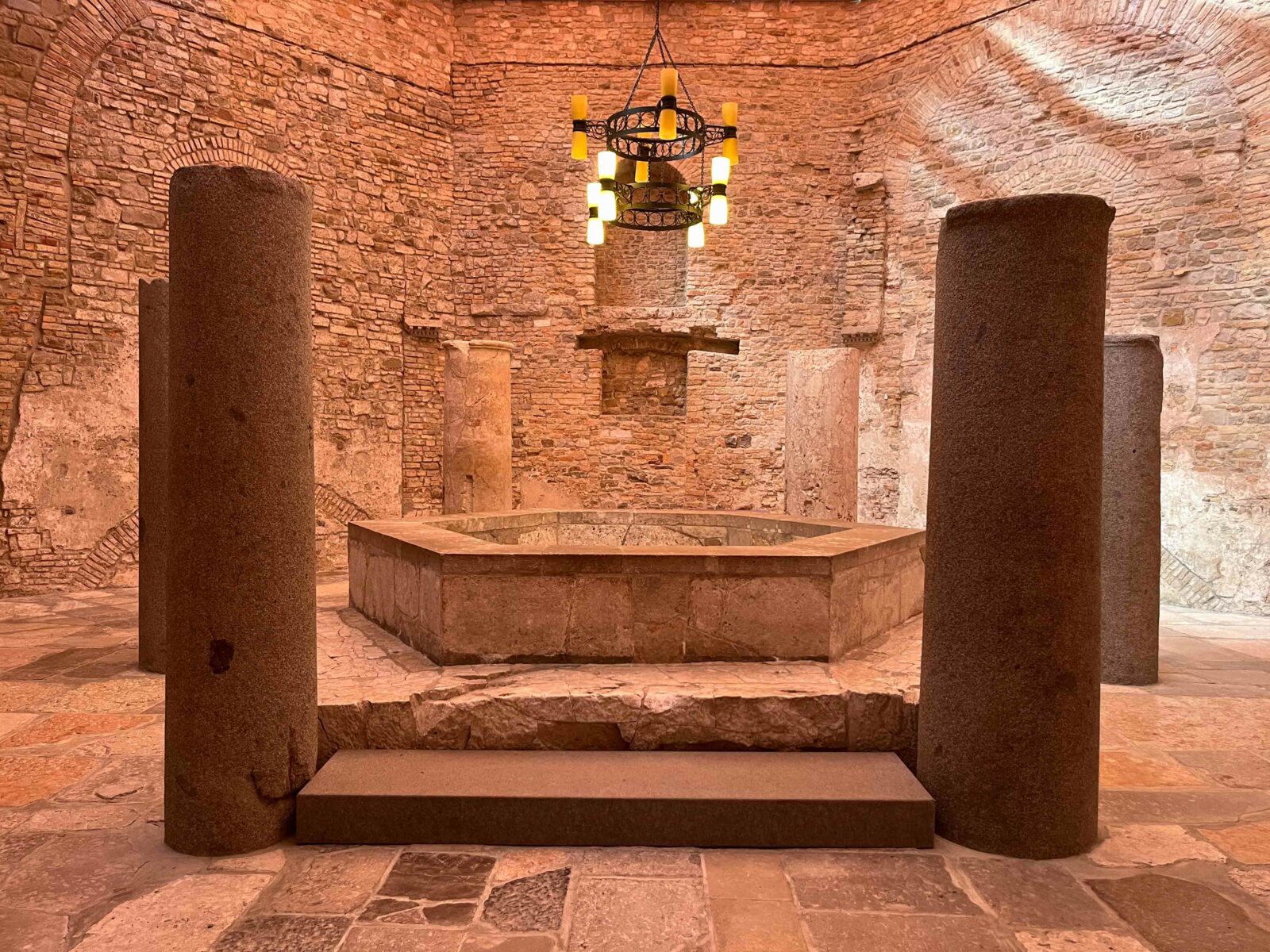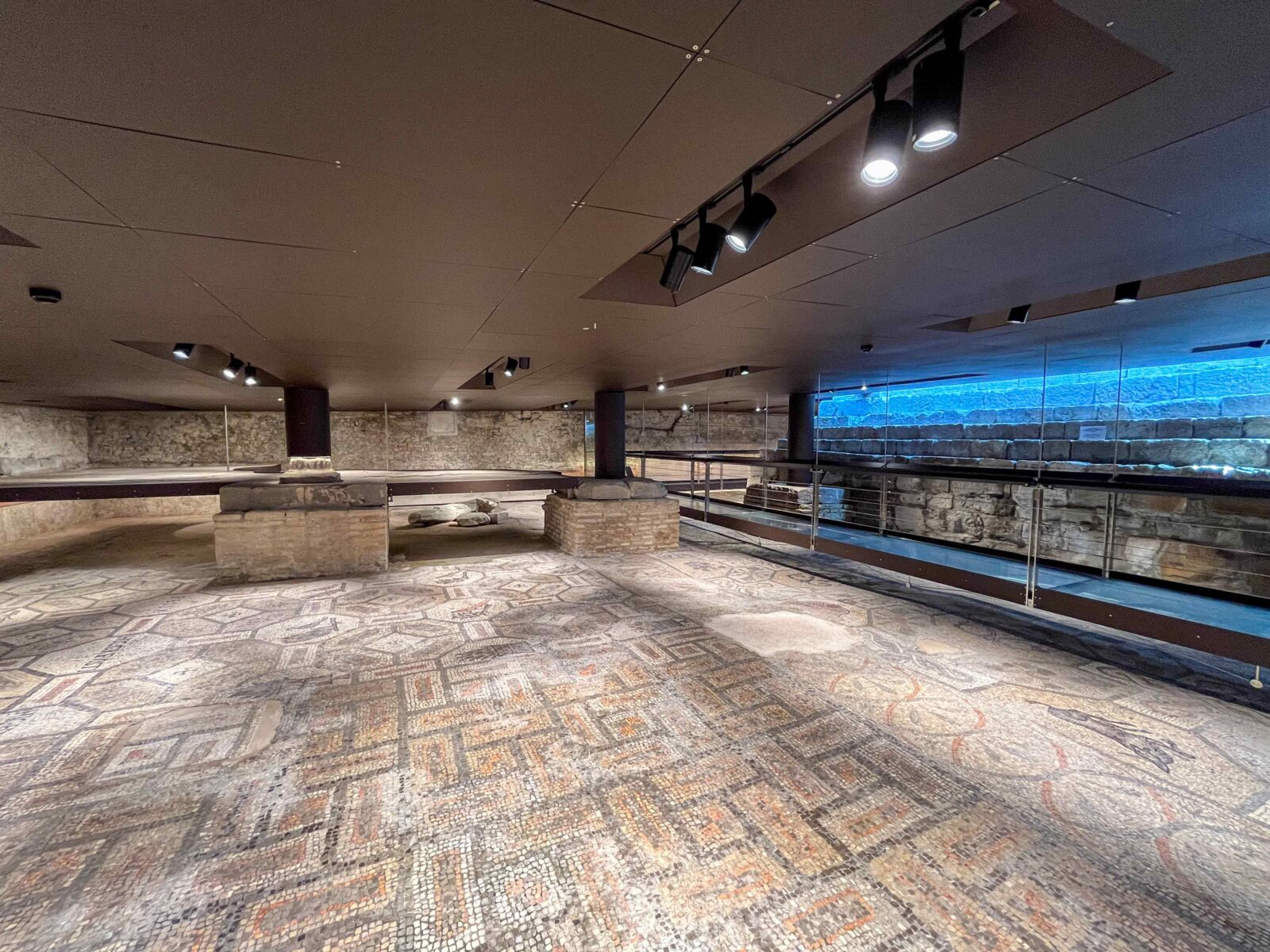The Patriarchal Basilica of Aquileia
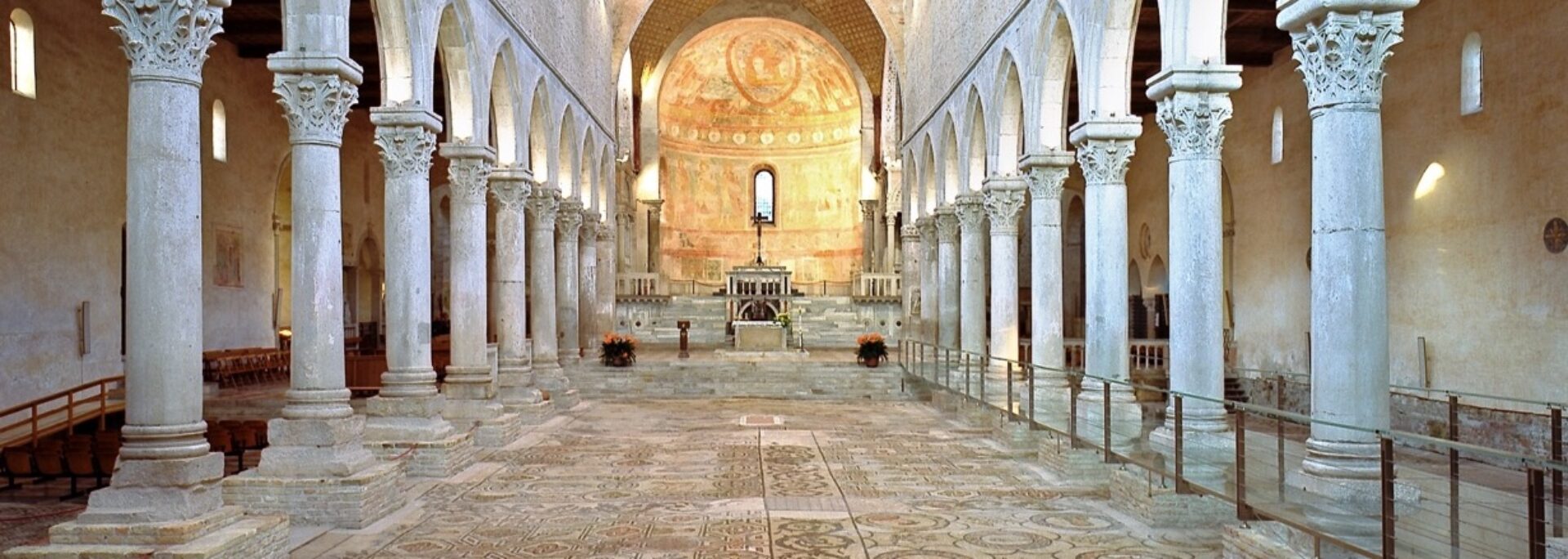
The Basilica of Aquileia has an architectural history whose roots go back to the 4th century AD. Through the numerous reconstructions that have taken place throughout its history, it presents itself today as a building with a strong Romanesque-Gothic imprint. In its interior, the polychrome floor mosaic from the 4th century, the largest in the western world for the early Christian period, stands out in particular.
Visiting this place of worship allows visitors to retrace more than 1,700 years of history that tell the evolution not only of artistic creation, thanks to the mosaics, frescoes and architectural structures here, but also of the relationship between Western man and Christianity.
The Museo per tutti guide offers the opportunity of taking a journey through the most important areas of the Basilica, providing visitors with the tools to learn how the mosaics were created and to understand the iconography and multiple meanings of the mosaics that make Aquileia a unique place in Italy.
Inside the Basilica and the Crypt of the excavations, the route winds along a glass walkway that allows visitors to take a closer look at the mosaics.
The journey along the different rooms of the building is completed with a visit to the Baptistery and the South Hall, where only newly baptised people entered.
The transparency of the glass walkway and the need to wear earphones in case of a guided group tour are elements to keep in mind when organizing your visit.
If you read the complete guide to the Basilica of Aquileia from a computer, a mobile phone or a tablet, remember that you can click on the:
- titles of the tabs in the index
- titles of the insight sections
- symbols you find at the top of all pages

Contact the museum before your visit
Piazza Capitolo 1
33051 Aquileia (UD)
from Mon to Sat 10am – 7pm
Sun 12am – 7pm
March, October:
from Mon to Sat 10am – 6pm
Sun 12am – 6pm
From November to February:
from Mon to Fri 10am – 4pm
Sat 10am – 5pm
Sun 12am – 7pm
Facilities
 Tour guides
Tour guides
 Accessible toilets
Accessible toilets
